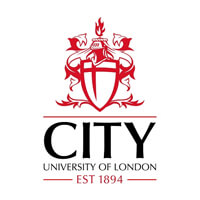fees waived
Aerospace Engineering, BEng (Hons)
City, University of London, United Kingdom
Subject ranking
UK / Guardian 2025 7th
UK / CUG 2024 18th
UK / Guardian 2025 38th
Costs
food & rentS$25.1K / year
Entry requirements
Scholarships
Limited quantity
Information
Code
Intakes
Website (External)
Programmes
Information
Duration
2028
This aerospace engineering degree provides essential skills in the design, construction, analysis, and testing of aerospace systems, positioning graduates as key contributors to air transport, defence, and space sectors—the UK's fastest-growing engineering fields. Over three years, students gain high-level knowledge in aerospace vehicle analysis, design, and operations, with a focus on innovative, sustainable solutions. Through challenging projects, an optional industrial placement, and access to world-leading facilities like wind tunnels, learners develop expertise in structures, propulsion, control, and manufacturing, alongside sustainable life-cycle engineering.The curriculum builds a strong foundation in mathematics, engineering science, and computing in Year 1, advances to fluid mechanics and materials in Year 2, and culminates in specialized modules like aerospace propulsion and flight mechanics in Year 3. Assessment combines coursework, exams, design studies, and project reports, with grades weighted toward later years. Graduates are highly employable, with opportunities at elite firms like BAE Systems and Airbus, and the program is expected to achieve full accreditation from the Royal Aeronautical Society for Chartered Engineer status.
Students develop a strong technical background in the key subjects of Aerospace Engineering such as air/space-ship structure, design, propulsion, control and manufacturing. Management studies and sustainable life-cycle engineering skills are also integral parts of the course. Year 1 Our shared engineering first year allows you to build a foundation in mathematics, engineering, physics, and computing. -The Engineering in Society - Social responsibility (15 credits) -Engineering Design 1 (15 credits) -Introduction to Mechanics of materials and manufacturing (15 credits) -Electronics - including circuits, digital and analog electronics (15 credits) -Introduction to programming (15 credits) -Engineering Science (15 credits) -Mathematics 1 (15 credits) -Introduction to Thermodynamics and Fluid Mechanics (15 credits) Year 2 Take modules including composite material design, fundamentals of structural stability and air flow behaviour. Understand how aeronautics and aerospace engineering fits in the circular economy. -The Engineer in Society: Sustainability and Circular Economy (15 credits) -Mathematics 2 (15 credits) -Engineering Design 2 (15 credits) -Fluid Mechanics (15 credits) -Structures and Materials (15 credits) -Thermodynamics (15 credits) -Mechatronics and Systems (15 credits) -Data Analysis for Engineers (15 credits) Year 3 Deepen your expertise with applied modules in analysis and design of typical aircraft, sustainable manufacturing and achieving zero-emission flight of the future. Learn about wind tunnel flows and complete an aerospace engineering project. -Individual project (30 credits) -Aerospace Engineering in the society (15 credits) -Composite Analysis and Manufacturing (15 credits) -Aerospace Propulsion (15 credits) -Gas Dynamics (15 credits) -Flight Mechanics (15 credits) -Telecommunication Systems (15 credits)

